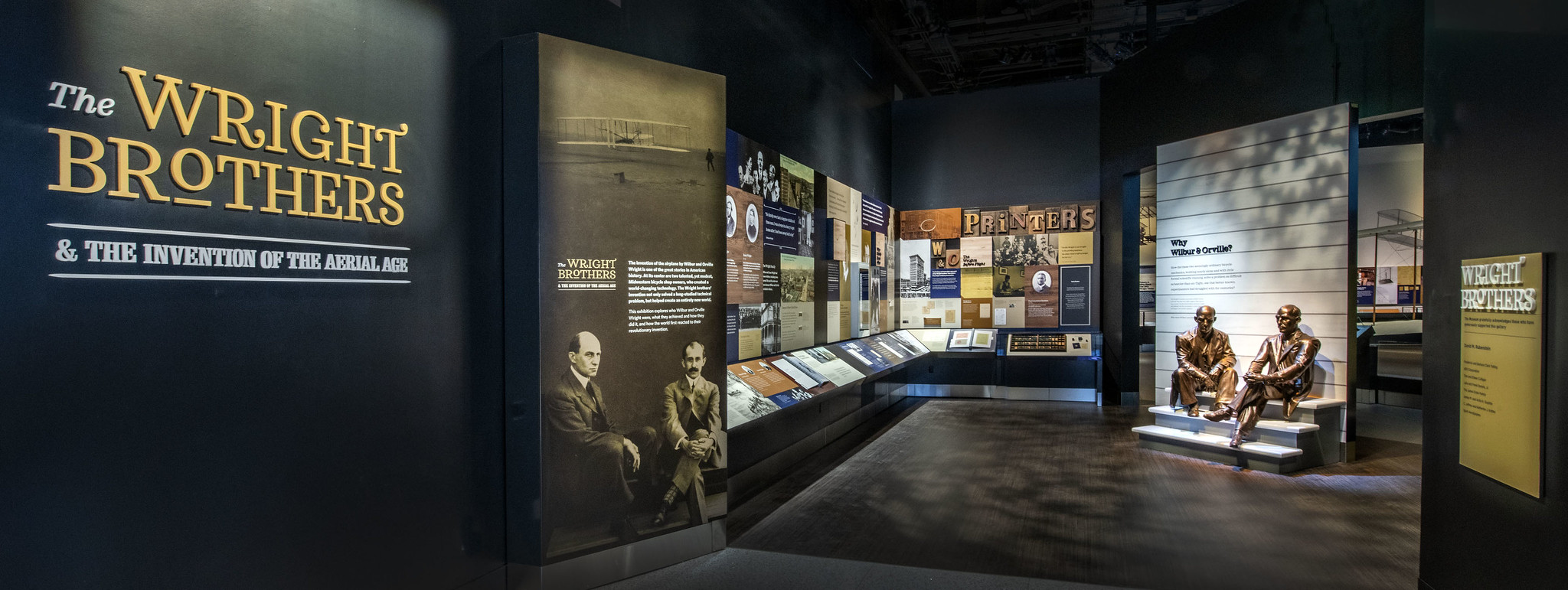“The Wright Brothers & the Invention of the Aerial Age”
Title: “The Wright Brothers & The Invention of the Aerial Age”
Opening: Oct. 14, 2022; National Air and Space Museum, Washington, D.C., Gallery 107
The invention of the airplane by Wilbur and Orville Wright is one of the great stories in American history. The Wright brothers’ invention not only solved a long-studied technical problem, but also helped create an entirely new world. The reimagined “Wright Brothers & the Invention of the Aerial Age” exhibition will show who Wilbur and Orville Wright were, what they achieved and how they did it, and how the world first reacted to their revolutionary invention. At the center of the story and the heart of the gallery is the 1903 Wright Flyer, one of the most iconic artifacts in the Smithsonian’s collection.
Highlights include:
- The Original 1903 Wright Flyer: This is the 1903 Wright Flyer that made four flights at Kitty Hawk, North Carolina, Dec. 17, 1903, the best covering 852 feet (284 meters) in 59 seconds. It was the first heavier-than-air, powered aircraft to make a sustained, controlled flight with a pilot aboard.
- An Original Wright Bicycle: Only five bicycles made by the Wright brothers are known to exist. This one, a model they called the St. Clair, was built in 1898 and sold for $42.50.
- A Piece of Original Fabric from the 1903 Wright Flyer: To symbolically link the first airplane flight with the first human exploration of another celestial body, this piece of wood and fabric from the Wright Flyer was carried to the surface of the moon by the crew of Apollo 11 in 1969.
- Wright Stopwatch: This may look like an ordinary stopwatch, but it documented history. This stopwatch was used by the Wright brothers to time their first successful flights in the Wright Flyer in December 1903.
- There is Music in the Air Interactive: Using a touchscreen, visitors can listen to recordings of songs that show the influence of the airplane on popular culture.
Sponsors: David M. Rubenstein, Frederick and Barbara Clark Telling, Tom and Eileen Culligan, Julia and Frank Daniels Jr., The James Dicke Family, James M. and Anita K. Guyette, C. Jeffrey and Katherine J. Knittel, Spirit AeroSystems
“The Wright Brothers & The Invention of the Aerial Age” Curator Bio
Peter L. Jakab
Peter L. Jakab is a part-time senior curator at the museum. He formerly served as chief curator and the museum’s associate director for collections and curatorial affairs. He has been with the museum since 1983. He holds a Bachelor of Arts, Master of Arts and doctorate in American history from Rutgers University. His areas of specialization include the history of technology, aerospace history, and American social and cultural history. Prior museum work includes stays at the Edison National Historic Site, West Orange, New Jersey, and the New Jersey Historical Commission. He also spent a year with the Thomas A. Edison Papers Project and two years teaching American history at Rutgers University during his graduate study. At the museum, he has curated numerous exhibitions and frequently lectured on the history of technology, the history of invention, the Wright brothers and pioneer aviation and World War I aviation. His exhibitions include “Artist Soldiers: Artistic Expression in the First World War”; “Leonardo da Vinci’s Codex on the Flight of Birds,” featuring the original da Vinci Codex; and “The Wright Brothers & The Invention of the Aerial Age,” a major gallery featuring the original 1903 Wright Flyer.
# # #
SI-315-2022
Alison Wood
202-633-2376
Amy Stamm
202-633-2392
Exhibition: https://airandspace.si.edu/exhibitions/wright-brothers-reimagined
Photos: https://www.flickr.com/gp/airandspace/8707w5665D

